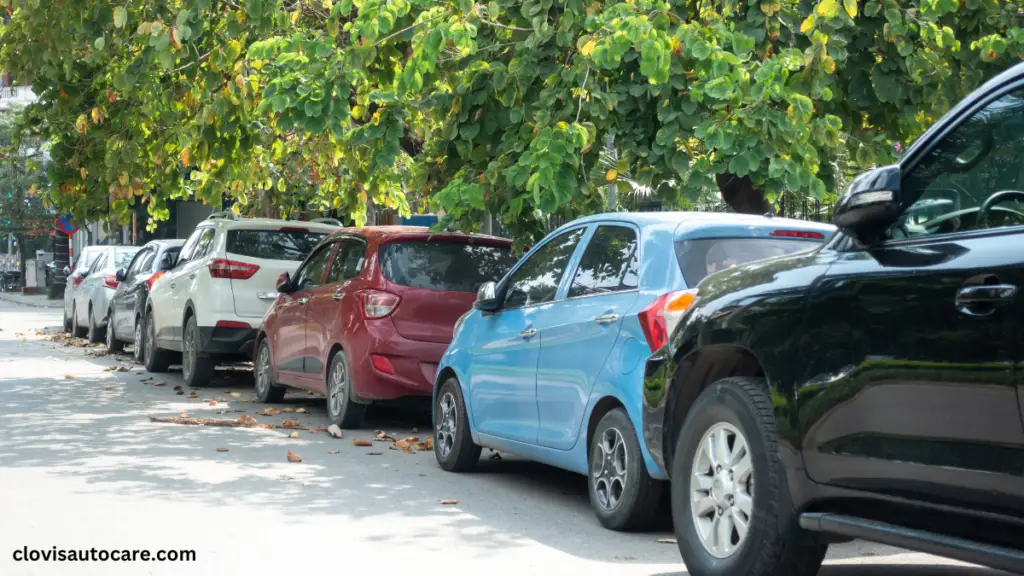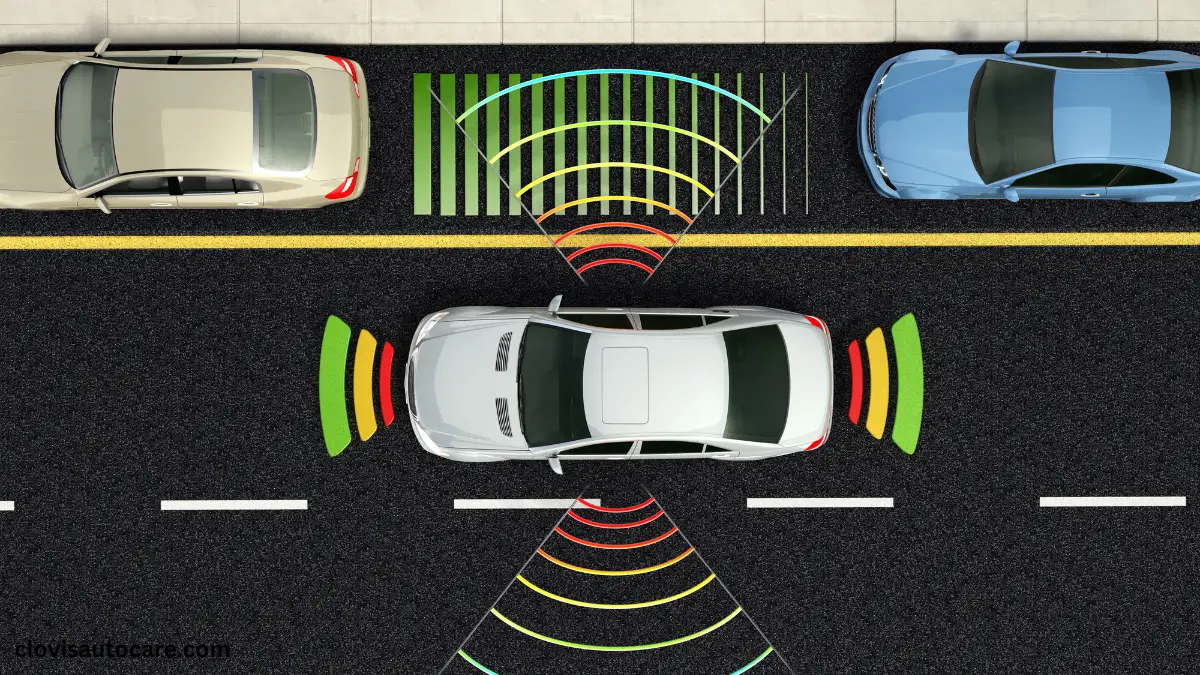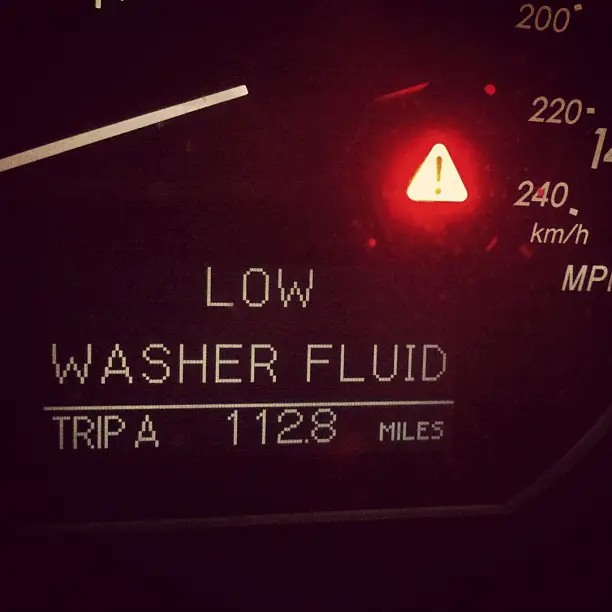
Parallel parking can feel daunting, especially if you’ve been avoiding it for years. But imagine the freedom and confidence you’ll gain once you master this essential skill.
There’s no need to constantly circle the block or experience embarrassment when you can’t fit into a tight space.
Instead, you’ll effortlessly maneuver into parking spaces, leaving a lasting impression on your passengers and simplifying city driving.
This guide will teach you how to parallel park proficiently in 5 simple steps, addressing common fears and misconceptions along the way.
Quick Fix If you’re in a hurry and need a quick fix: Just drive up to where your seat is parallel to the rear door of the front car and turn into reverse park.
When you’re halfway parked, start turning in the other direction to straighten up.
OR listen to this voice note as a guide while parking
To make your practice sessions even more effective, consider using temporary cones to simulate parking spaces at home.
This way, you can practice in a safe and controlled environment before taking your skills to the streets.
With a positive mindset and a bit of practice, you’ll be parallel parking like a seasoned driver in no time.
Contents
Key Takeaways
- Understand the basic steps of parallel parking.
- Learn practical tips to make parallel parking easier.
- Build confidence through practice and patience.
Step 1: Find the Right Spot
- Look for a space that is at least one and a half times the length of your car.
- Ensure the spot is legal, safe, and free from obstructions.
Step 2: Signal and Position Your Car
- Signal your intention to park.
- Align your car parallel to the car in front, leaving about 2-3 feet of space.
- Check your mirrors and blind spots for any approaching vehicles or pedestrians.
Step 3: Reverse and Turn the Wheel
- Slowly reverse and turn your steering wheel towards the curb.
- Pay attention to your mirrors and the area behind you.
- Use reference points on your car to help with alignment.
Step 4: Straighten the Wheel
- Once your front wheel is aligned with the back bumper of the car in front, straighten your steering wheel.
- Continue reversing slowly until your car is halfway into the space.
Step 5: Adjust and Center Your Car
- Turn your steering wheel away from the curb to straighten your car within the space.
- Make small adjustments to ensure you are centered and parallel to the curb.
- Check your position and make sure you are not too close to the car in front or behind.

Tips and Tricks
- Practice in a quiet area before attempting on busy streets.
- Use reference points on your car for alignment.
- Stay calm and patient; practice makes perfect.
- Consider using parking aids like sensors or cameras if available.
- Understand how vehicle size and maneuverability affect parking.
- Be aware of parking space dimensions and curb height.
- Consider environmental conditions like slippery or uneven surfaces and limited visibility.
Practice and Improvement
Repetitive Training
Repetitive training is key to mastering parallel parking. The more you practice, the more comfortable and confident you’ll become.
Start by practicing in a quiet, open area where you can set up temporary cones to simulate parking spaces.
This will allow you to focus on the mechanics of parallel parking without the pressure of real traffic. Repeat the steps until you can perform them smoothly and consistently.
Practicing in Safe Locations
Choose safe locations for your practice sessions. Empty parking lots, quiet residential streets, or designated practice areas are ideal.
These environments provide a controlled setting where you can practice without the stress of other vehicles or pedestrians.
As you gain confidence, gradually move to more challenging locations with real parking spaces.
Developing Muscle Memory
Developing muscle memory is essential for making parallel parking second nature.
Muscle memory is built through repetition, allowing your body to perform the necessary movements automatically.
Focus on the key steps of parallel parking and practice them regularly.
Over time, your body will learn the precise movements needed to execute a perfect parallel park, making the process feel effortless.
Advanced Techniques
One-Move Parallel Parking
One-move parallel parking is an advanced technique that allows you to park in a single, fluid motion.
This method requires precise control and a good understanding of your vehicle’s dimensions. To execute this technique, start by positioning your car parallel to the vehicle in front of the parking space.
Begin reversing while turning the steering wheel towards the curb. As your car starts to angle into the space, smoothly straighten the wheel and continue reversing until your car is perfectly aligned with the curb.
This technique minimizes the need for multiple adjustments and can be particularly useful in tight spaces.
Reverse-Steering Mastery
Mastering reverse steering is crucial for advanced parallel parking. This involves understanding how your car responds to steering inputs while reversing.
Spend time in a safe, open area to gain a sense of how your car maneuvers in reverse.
Focus on making smooth, controlled movements with the steering wheel, and pay attention to how your car reacts.
This skill will help you make precise adjustments when parallel parking, ensuring that you can fit into spaces with ease and confidence.
Conclusion
Mastering parallel parking is an essential skill that can greatly enhance your driving experience.
Even if you’ve been avoiding parallel parking for years, you can master it by following the five simple steps in this guide and incorporating the advanced techniques.
Remember, practice is key to building confidence and improving your skills. Use temporary cones to simulate parking spaces and practice in a safe environment before taking your skills to the streets.
You’ll soon discover that parallel parking comes naturally to you with patience and persistence. Happy parking
How much space do you need to parallel park safely?
To parallel park safely, you need a space that is at least one and a half times the length of your car.
This ensures you have enough room to maneuver your vehicle into the parking spot without hitting other cars or obstacles
How to get out of a parallel park?
To get out of a parallel park, follow these steps:
1. Check your surroundings for any approaching vehicles or pedestrians.
2. Signal your intention to leave the parking spot.
3. Reverse slowly while turning your steering wheel away from the curb to angle your car out of the space.
4. Once your front wheels are clear of the car in front, turn your steering wheel towards the curb to straighten your car.
5. Drive forward carefully, ensuring you have enough clearance from the car behind you.
How much space should be allotted to park your vehicle parallel to the curb?
When parallel parking, you should aim to leave about 2-3 feet of space between your car and the car in front of the parking spot.
This allows you enough room to maneuver your vehicle into the space without hitting the other car.
Also, please make sure your vehicle is parallel to the curb and not too close to it, leaving enough space for passengers to exit safely.




Leave a Reply